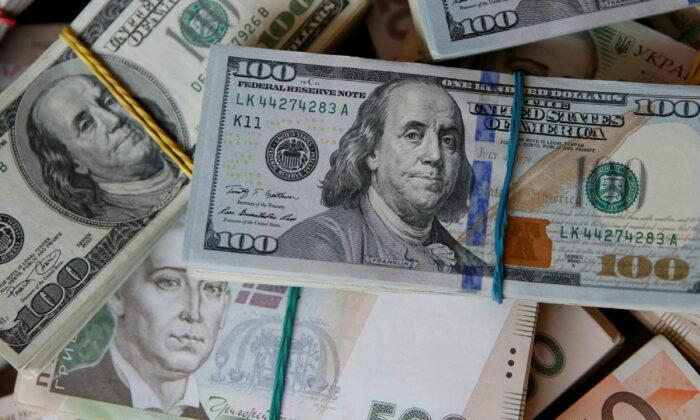LONDON/SINGAPORE—The euro was set for its best week since mid January on Friday ahead of inflation data that will shape the ECB’s interest rate plans, while investor expectations U.S. rates are near peaking meant the dollar headed for a second consecutive quarterly loss.
The European common currency was at $1.0883, down 0.2 percent on the day, but heading for a 1.1 percent weekly gain, its most in 11 weeks, as well as monthly and quarterly increases.
Europe-wide inflation data is due at 0900GMT. Higher than-expected German inflation figures released Thursday have reinforced expectations that there are a few more rate increases left from the European Central Bank.
French inflation data on Friday also came in a whisker above expectations, and Dutch inflation also rose.
“Inflation data in the eurozone will be an important driver, (for the euro)” said Francsco Pesole, FX strategist at ING, who expects the euro to reach $1.10 some time next week, after consolidating today.
He said “a big chunk of the (inflation-induced) move already happened after yesterday’s German figures were released.” The euro rose 0.56 percent on Thursday.
A Busy Quarter
In terms of the bigger picture, the dollar index is down 1.2 percent for the quarter, extending a 7.7 percent fall in the fourth quarter of 2022, as its modest boost from a rush to safety around mid-March as European banking jitters hit global markets seems to be fading.The dollar has also been dragged back as the focus on the U.S. banking sector in March caused U.S. interest rate markets to dramatically reprice the outlook.
Markets now see a roughly 40 percent chance that the Federal Reserve is finished with rate increases. Fed funds futures have priced rate cuts by year’s end.
The index was up on the day at 102.37
Sterling is set to be the best performing currency in the first quarter of 2023 with a roughly 2.5 percent gain. It was down 0.2 percent on the day on Friday at $1.2363 , but still set for weekly and monthly increases.
“Along with the improvement in the economic outlook, sterling is definitely drawing benefits from the market’s conviction that the Bank of England will need to continue raising rates,” said Pesole.
The dollar drifted 0.36 percent higher on the yen to 133.17 yen, set for a weekly gain after four weeks of declines as the Japanese currency benefited from its safe haven status, as well as lower U.S. yields.
“This week we have a recovery in risk sentiment because we haven’t had any major bad news about Europe or U.S. financial institutions,” said Yujiro Goto, chief FX strategist at Nomura Securities in Tokyo.
“How risk sentiment is traded in the next week will be key for dollar/yen.”
Another so-called safe-haven, the Swiss franc, has had a wild month as it rose in the wake of Silicon Valley Bank’s collapse, then dived as bank jitters hit Switzerland.
It was last at 0.9146 per dollar, and looks set to end the month not far from its 18-month peak of 0.9061 per dollar hit in early Feb.
Next week, central bank meetings loom in Australia and New Zealand, and markets have priced a pause for Australia and step-down in pace to a 25 basis point increase for New Zealand.
On Friday, the New Zealand dollar was at $0.6250, and the Aussie at $0.6675. It is about 2 percent lower for the quarter.
Both currencies found support from expanding Chinese manufacturing activity, though data on Friday showed the pace was slowing down. China’s yuan inched higher.





